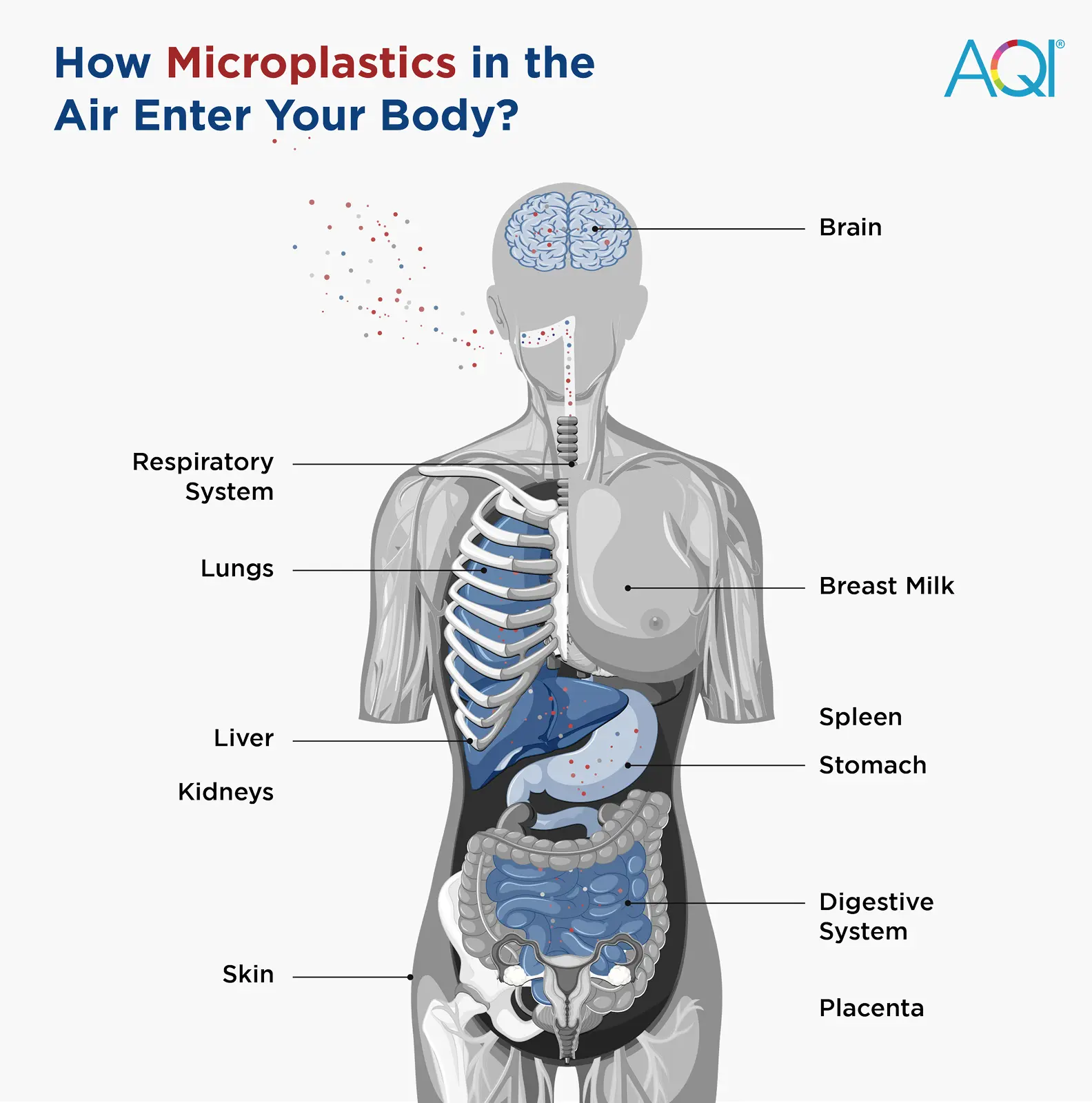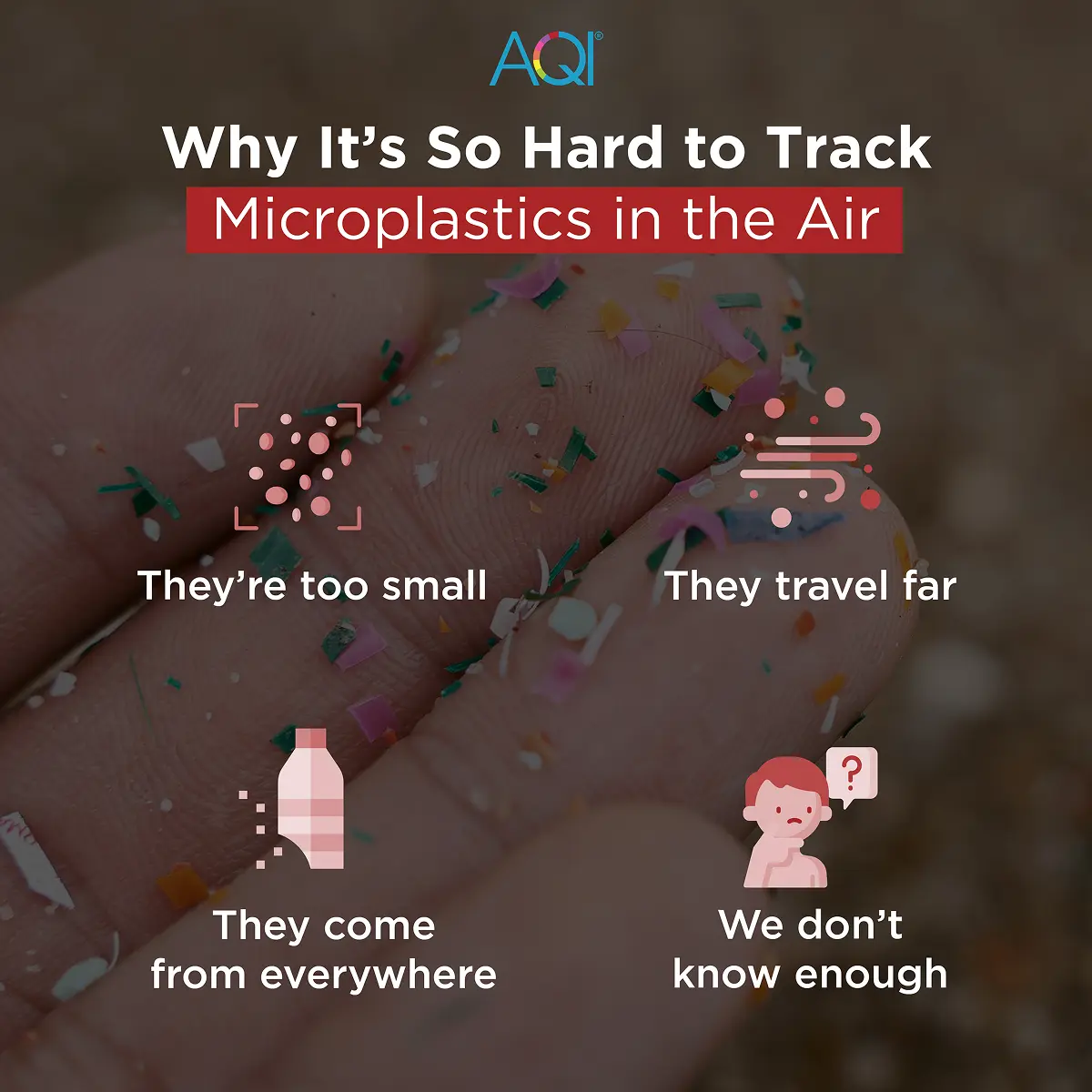Plastic is all around us—in our homes, workplaces, and even in the air we breathe. While we often think of plastic pollution as trash in the ocean or on beaches, there’s a hidden danger we rarely see: tiny plastic particles called microplastics in the air. Hence, these small pieces, often too tiny to see, are becoming a serious risk to our health.
A report by the Center for International Environmental Law (CIEL), called , warns about how common these airborne plastics have become. Even more worrying, we don’t yet have good ways to track or measure them.
This invisible pollution is a growing problem—and thus it’s something we all need to be aware of.
What Are Microplastics, and How Do They Get Into the Air?
Microplastics are tiny plastic pieces, and they have two main types:
- Firstly, Primary microplastics are made small on purpose for use in things like cosmetics and fertilizers.
- Secondly, Secondary microplastics form from the larger plastic items that break down over time from use, weather, or exposure to sunlight and form it.

Once they’re released, these tiny particles can travel long distances. Since, they float through the air on wind currents, crossing entire continents in just a few days or weeks. Scientists believe that about 25 metric tons of micro- and nanoplastics move around the globe each year through ocean air, sea spray, and fog.
Sources and Transport of Microplastic in the Air
| Source | Contribution | Transport Mechanism |
| Synthetic Clothing | Microfiber shedding during washing | Air currents, dust |
| Car Tires | Wear and tear fragments | Road dust, atmospheric lift |
| Industrial Emissions | Production and disposal processes | Direct release, wind dispersion |
| Degraded Plastic Waste | Fragmentation from landfills, oceans | Sea spray, fog, atmospheric lift |
Microplastics come from all kinds of everyday sources: synthetic clothes shed plastic fibers, car tires release tiny plastic pieces as they wear down, and plastic trash slowly breaks apart in the environment. Because of this, microplastics known as one of the most widespread pollutants created by humans.
The Health Risks: Breathing in Tiny Plastic
We can’t see them, but tiny plastic particles are in the air—and we’re breathing them in. Some are so small they can get deep into our lungs and even into our blood and organs.
Scientists have already found plastic in human lungs, blood, and even in unborn babies’ placentas. That’s a big warning sign. Here’s how these tiny plastics can harm us:
- Breathing problems: When we inhale microplastics, they can irritate our lungs and cause swelling or discomfort—kind of like breathing in smoke or dust.
- Toxic chemicals: These plastics often carry harmful chemicals that can mess with our hormones, damage our brains, or even cause cancer.
- Long-term health risks: Over time, these tiny plastics may cause serious health problems like heart disease, cancer, or other long-term illnesses.
And here’s a shocking fact: the average person takes in enough microplastics each week to equal the size of a credit card—that’s through the air we breathe and the food and water we consume. That adds up to 74,000 to 121,000 particles every year.
Why It’s So Hard to Track Microplastics in the Air
Even though we know microplastics are harmful, keeping track of them in the air is really difficult. Here’s why:

- They’re too small: Most air monitors are designed to detect bigger particles like dust or smoke. Microplastics are much smaller—so small they often slip by without being noticed.
- They travel far: Wind can carry these tiny particles across cities, countries, and even oceans. That makes it really hard to track where they come from or where they end up.
- They come from everywhere: Microplastics are released at every stage of plastic use—from making products, to wearing clothes, to throwing things away. There are just too many sources to count.
- We don’t know enough: Scientists are still trying to figure out how many microplastics are in the air and how they move. And right now, most air pollution rules don’t even include them.
In short, we’re dealing with a problem we can’t fully see or measure. And with plastic production expected to grow by 40% in the next 10 years, the problem is only going to get worse.
A Growing Crisis of Microplastic in the Air:
Here’s the truth: plastic pollution isn’t just about trash—it’s a health emergency.
- Almost all plastics (99%) are made from fossil fuels.
- In just one year (2021), plastic production in the EU created 13.4 million tons of CO₂, making up 20% of the chemical industry’s emissions.
- Only 9% of all plastic ever made has been recycled. The rest breaks down into microplastics that end up in the air, water, and even inside our bodies.
Key Things Everyone Should Know about Microplastic in the Air:
- We’re always exposed: No matter where you live, you’re likely breathing in up to 16 tiny plastic particles every hour.
- It’s hurting us: These plastics can cause breathing problems, chemical exposure, and even long-term diseases.
- We’re not ready: We don’t have the proper tools to track or measure this problem. That’s why prevention is so important.
What Can We Do To Reduce Microplastic in the Air?
Fixing this needs big changes, but everyday choices matter too and can reduce the microplastic in the air.
- Wear clothes made from natural fibers like cotton or wool instead of synthetic ones to reduce plastic fibers in the air.
- Avoid single-use plastics like straws, bags, and bottles to cut down on waste.
- Support laws and policies that reduce plastic production and protect our health.